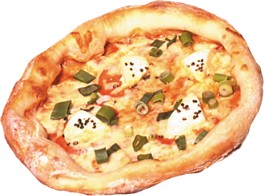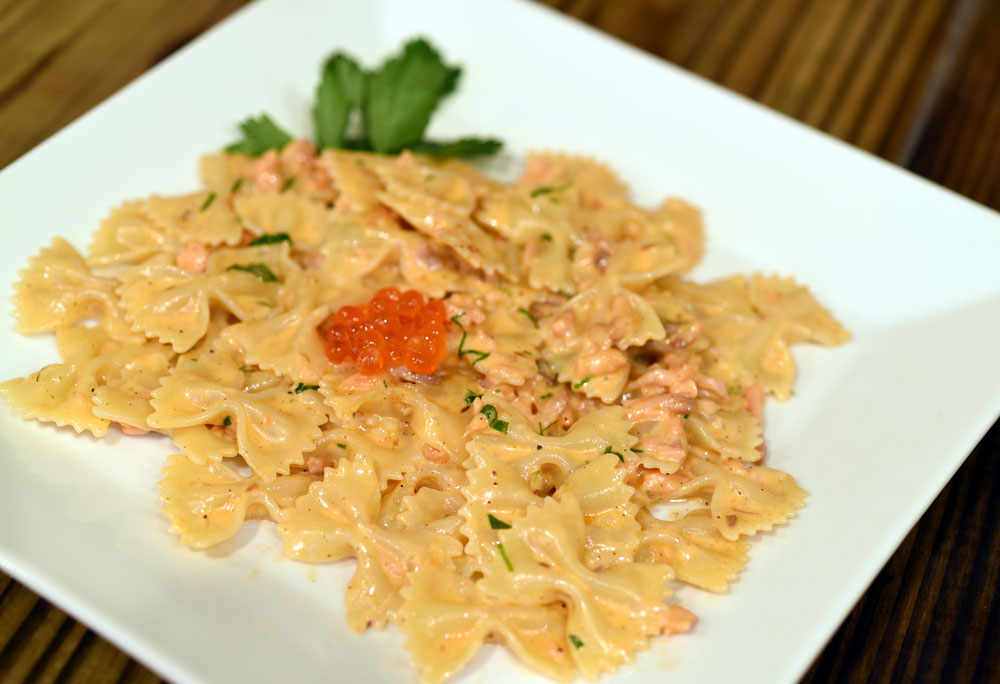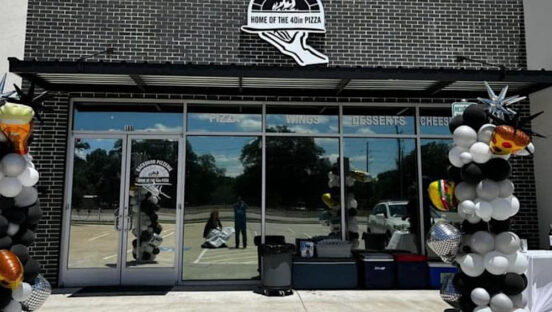My friends say I have one of the greatest jobs in the world. I get to travel around the country and even go to Italy to eat pizza. While this is true, what they don't understand is eating pizza is a small part of what I do. My job is to find ways to help pizzeria owners survive in this tough industry and increase their business through real life examples I hunt down and report. This has made me pay attention to everything associated with pizza.
When a pizza commercial comes on television I find myself zeroing in on what message they are trying to get across, what new product they are trying to promote, how they are attempting to lure customers in and who they are targeting. When I get a pizzeria's mail piece in my mailbox I find myself looking at some of the same points, and the same goes for ads I see in newspapers. Every once and a while it sparks an idea. This happened recently while I was watching television and one of the Pizza Hut commercials came on.
In the past year or so, Pizza Hut has promoted the Chicago style pizza along with the Big New Yorker. As I sat there watching the commercial, it got me to thinking about just how many styles of pizza there are out there, what the appeal to customers is and how this could be used to a pizzeria owner's advantage. I made a few phone calls and did some research to find out just what was out there and tried to find out when and where these different styles originated. When it comes to different styles, you can find Chicago style, New York style, California style and stuffed pizzas. There are also pan pizzas, cracker crusts, and thick and thin pizzas just to name a few. What started out as a side project quickly evolved into a good lesson about pizza styles and their histories. I also found some marketing strategies related to the different styles.
Pizza's History- A Quick Lesson
I hope this doesn't upset any of our readers who are of Italian descent, but the Italians did not invent pizza, although they did improve upon it and make it famous. It is written that the Italian interpretation of pizza most likely evolved from cooking concepts started by the Etruscans who occupied Italian areas in the north and the Greeks in the south. From about 730 B.C. until about 130 B.C., Greeks, who were considered to be some of greatest bakers in ancient times, occupied the southernmost regions of Italy. The Greeks baked round, flat breads and garnished them with oils, garlic, vegetables and other foods, leaving a rim of crust to serve as a "handle."
- The first pizzas were known as focaccia and were simply flat breads with herbs. After focaccia, came "Casa de nanza," which means "take out before." This early form of pizza was created as a peasant's food and was designed like the French crepe and Mexican taco as a food to be eaten without utensils, as a way to use fresh produce made locally and as a way to get rid of leftovers.
- Pizza as we know it could not have came into existence until Europeans got over their fear that tomatoes were poisonous. Tomatoes were brought back to Europe by explorers who found the fruit in Mexico and Central America.
- So when did the word "pizza" first appear? "The term pizza is clouded in some ambiguity, though it may derive from an Old Italian word meaning a point, which in turn led to the Italian word pizzicare, meaning to pinch or pluck. The word shows up for the first time in print as a Neapolitan dialect word–piza or picea–about 1000 A.D., possibly referring to the manner in which something is plucked from a hot oven."
- "The world's first true pizzeria is though to be 'Antica Pizzaria Port'Alba,' which opened in 1830 in Naples, Italy, and is still in business today." "Modern pizza is attributed to baker Raffaele Esposito of Napoli (Naples) in the Italian region of Campania. In 1889, Esposito of Pizzeria di Pietro (now called Pizzeria Brandi) baked pizza especially for the visit of Italian King Umberto I and Queen Margherita and for one of the pizzas embellished the classic Pizza Alla Marinara with mozzarella and basil. The pizza was very patriotic and resembled the Italian flag with its colors of green (basil), white (mozzarella), and red (tomatoes). This pizza was named Pizza Margherita in honor of the Queen and set the standard by which today's pizza evolved and spread to Northern Italy and beyond, firmly establishing Naples as the pizza capitol of the world."
- "Pizza was imported to the United States by Italian immigrants. For many years, pizza was mostly available in cities with large Neapolitan populations [New York, Boston, New Haven, Philadelphia, Baltimore etc.]. The ingredients immigrants found in their new country differed from those in the old: In New York there was no buffalo-milk mozzarella, so cow's milk mozzarella was used; oregano, a staple southern Italian herb, was replaced in America by sweet marjoram; and American tomatoes, flour, even water, were different. Here pizza evolved into a large, sheet-like pie, perhaps eighteen inches or more in diameter, reflecting the abundance of the new country." The first pizzeria opened in the U.S. was in New York City in 1895 by an Italian immigrant named Gennaro Lombardi. The pizzeria is Lombardi's and it is still open. It wasn't until American soldiers returned from WWII that pizza became a national phenomenon. Returning American GI's brought back a taste for the pizzas they had had in Naples along with the assumptions that pizza, like spaghetti and meatballs, was a typical Italian dish, instead of a regional one.
So there is your crash course in pizza history. Now let's take this and look at what characteristics of pizza define its style, where it started and why.
New York Style
New York style pizza can be traced back to the 17th century when Spanish soldiers were occupying the area around Naples, Italy. One of their favorite snacks was a soft, crispy dough with toppings that the Neapolitans called sfiziosa. Like local New Yorkers who fold their slices in half and eat while walking, these Spanish soldiers folded the flat bread into a libretto (little book) and ate it with their hands. One of the main characteristics of New York style pizza is its thin, chewy crust, but that isn't everything that defines New York style pizza. Many might say that it's not New York style unless it leaves those yellow trails of oil running down your elbow when you eat it. This comes from the high butter fat cheese they use. Big Dave Ostrander says most New York pizzerias use Grande mozzarella cheese to get this trait. For New York style, fresh mozzarella isn't an option…it's a rule. Many are hearth or deck oven baked and the sauce is usually thinner than most sauces with fewer ingredients added. The dough is made with high protein, high gluten flour (usually 13.5 to 14.5 percent protein) and is slightly chewy. There is an old urban legend that you can only produce New York pizza in New York due to the hard water they have. While it is true that New York has hard water, it is debatable as to whether this is the secret ingredient.
Chicago Style
One of the identifying features of Chicago style pizza is its deep dish. In 1943, Ike Sewell created a deep-dish pizza. Ike's belief was if you made a pizza with massive amounts of ingredients (especially sausage) it would become a hearty meal choice for people. He was right, so he opened Pizzeria Uno, which specialized in deep-dish pizza and started the Chicago style phenomenon. Chicago style pizza is usually eaten with a knife and fork rather than the hands because it is so thick and heavy. The dough, which contrary to many beliefs, is not really thick, but has a biscuit-like texture and has raised high on the sides of seasoned deep dish pans to hold all of the ingredients in. The cheese is placed directly on the dough and toppings added on top of that. The top is cheesed and sauced with a chunky sauce with a light sprinkling of cheese scattered on top of the sauce. Cooking times are usually longer due to the overall thickness of the pizza. The dough used for this style usually contains between 10.5 and 11.5 percent protein and is under-mixed (not smooth). Table grade margarine is used in the pans to add a slight, fried crispness, contribute to the rich flavor and to aid as a release agent in helping to get the baked pizzas out of the pan.
Calfornia Style
One of the identifying characteristics is of California style pizza is the toppings. California style tends to use exotic toppings and "off-the-beaten-path" combinations. While it is difficult to determine the origins of this style, some think it started in the 1970's or early 1980's. Back in the 1970's, creative culinary experts like Wolfgang Puck started experimenting with different, non-traditional toppings and later, around the mid-1980's, concepts like California Pizza Kitchen began selling the West Coast style. The dough has the same protein content as Chicago style, but the dough is mixed until it is smooth. The dough is placed in the pan and allowed to rise as much as _ of an inch. In many cases these crusts are par-baked (sometimes called double baked) to order. This is done to help retain the height after baking and it also contributes to the crispy eating characteristic. The crust is light, airy and tender, which comes from the flour and proofing. Toppings tend to range from shrimp and asparagus to smoked salmon and other seafoods. Vegetarian combinations are also predominant.
Pan Style
 This style gets its name due to the fact that it is cooked in a pan, but there is more to it than that. The pan has oil in it that fries the bottom layer giving it a light crunch, and a slightly different flavor than a conventionally, baked pizza. The dough is somewhat thick as a result of the dough being allowed to proof/rise in the pan prior to baking. Toppings and cheese usually don't identify a pan style and can be used in any amounts. Areas in the southeastern U.S. are usually identified with this style of pizza.
This style gets its name due to the fact that it is cooked in a pan, but there is more to it than that. The pan has oil in it that fries the bottom layer giving it a light crunch, and a slightly different flavor than a conventionally, baked pizza. The dough is somewhat thick as a result of the dough being allowed to proof/rise in the pan prior to baking. Toppings and cheese usually don't identify a pan style and can be used in any amounts. Areas in the southeastern U.S. are usually identified with this style of pizza.
Thick Style
Thick style pizzas are really nothing more than a thicker version of a thin crust pizza. They are usually baked on a screen, disk, or directly on the oven hearth. The height or thickness of this style of pizza is achieved through both greater dough weight and some proofing, though not as much proofing as is given to the pan style thick crust varieties. Immediately after proofing, the dough is sauced and topped in the usual manner and taken to the oven for baking. The finished pizzas have moderate thickness, a slightly crispy bottom texture and a moderately chewy eating characteristic. This type of pizza does not have a regional preference, but it is instead, found served throughout the entire U.S.
Cracker and Thin Styles
Pizza Hut made the cracker style crust popular back in the 1950's and they are still identified with this style. The dough is under-mixed according to Tom Lehmann with the American Institute of Baking. It is mixed until you can still see some of the white flour (only about five minutes). This dough needs to be fermented for five or six hours and must be sheeted to obtain its layered, cracker-like texture. On the other hand, a thin crust style is mixed until it is smooth and then stretched by hand. The texture of a true thin crust is crispy on the outside, yet soft inside. These styles of pizzas have been traditionally found in taverns and bars because they allow the customer to eat without being filled up on dough. The toppings and cheese are modestly applied and not piled up high and a thinner sauce usually works best.
Take 'n' Bake Style
This is the newest style to emerge in the evolution of pizza. It started out on the West Coast with Papa Murphy's. You've probably heard read something about this style in the past year or two unless you have been trapped on a deserted island with no contact to the pizza world. These pizzas are made exactly like your others, except you don't cook them – your customers do. The trend started around Oregon and northern California and has been migrating east for the last couple of years like a plague. For information on how to prepare and market this style, read Tom Lehmann's and Big Dave's articles on making and marketing take-and-bake pizza at: www.pmq.com/mag/2002spring/tom_lehmann.shtml
www.pmq.com/mag/2002summer/big_dave_ostrander.shtml
Stuffed
Some people confuse a stuffed pizza with Chicago style. While they may look similar, they are quite different. Stuffed pizzas start with a medium thick dough/ crust and then some sauce, toppings and a layer of cheese are added. A separate (much thinner) layer of dough is then placed on top of the toppings and then given another, and greater, application of sauce and cheese on top of the pizza. This creates a lasagna-like pie. Cook times on this style are usually in the 30-minute range.
Focaccia Style
Focaccia style pizzas can be identified by the absence of sauce. These pizzas start with a round, flat bread (focaccia) that ranges from 3/8 to as much as 1-inch in thickness and starts with a medium crust dough. They are topped with oils, grilled vegetables and other toppings and can be found in many gourmet pizzerias. This style of pizza is among the oldest styles of pizzas as they were the first types made before the introduction of tomatoes by European explorers returning from Mexico and Central America.
Other Styles
The type of crust is one of the main things that separate the different styles of pizza, but as you may have noticed, toppings and their placement also contribute to their differences. Another style is Tex-Mex, which is commonly found in the Southwest regions of the U.S. This style contains 20 to 25 percent masa flour, which gives the crust a corn chip flavor. This style of pizza can be topped with corn, shredded beef or other Tex-Mex toppings. The sauce is usually a chunky sauce and some even use a picante-like sauce. To get a regional taste pizza, you can emulate their styles by using the toppings they use. For example, pizzas in the Pennsylvania and Ohio regions can be identified by the use of provolone cheese rather than mozzarella. Areas north of California tend to use seafoods and smoked salmon.
Using Styles for Marketing
As you can see, a pizza is not just a pizza. The style of pizza you serve can help your restaurant's image and the two should work together. If you are focusing on a traditional New York style pizza, you can accent this by using your restaurant's decor to drive home the idea that the customer is getting a true New York style pizza. Maybe use art depicting famous New York scenes or New York sports memorabilia. The same goes for a restaurant that primarily serves Chicago style or a traditional Sicilian thick crust.
Another idea is to take a look at what styles of pizza are dominant in your area. Are most pizzerias serving thin, thick, deep dish or New York styles?
There are two schools of thought to consider here. Do you want to fill a niche no one else is addressing or go with what seems to be popular with the locals? If you have a diverse population, you may want to think about filling a niche now one else does, but in some areas, say for example like St. Louis, Missouri, you can't hardly sell anything but thin styles because that is what the customer base prefers. If you are opening a location that is dominated by the major chains, you may want to do an analysis of which brand is most popular and what style they are known for making.
For those looking to add a new style of pizza to their menu, go to the PMQ Recipe Bank and peruse some of the different styles of crusts and pizzas mentioned in this article. The Recipe Bank is located at www.pmq.com/cgi-bin/cookbook/recipe.cgi.
- The Pizza Book: Everything There is to Know About the World's Greatest Pie, Evelyn Sloman [Times Books: New York] 1984 (p.3)
- Fricano's Pizza website (www.iserv.net/~fricanos/trivia.htm)
- About Pizza website (www.aboutpizza.com/tomato.php)
- Dictionary of Italian Food and Drink, John Maraini [Broadway Books: New York] 1998 (p.196-199)
- Homemade Gourmet Pizza – www.ghgcorp.com/coyej/history.htm












